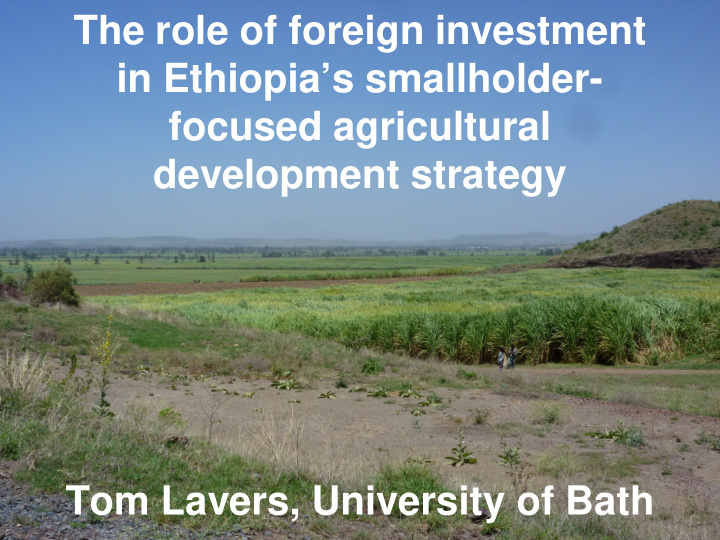



The role of foreign investment in Ethiopia’s smallholder- focused agricultural development strategy Tom Lavers, University of Bath
Ethiopia’s agricultural development strategy • Smallholder based development strategy • Investment sector – Export focus to earn foreign exchange – Domestic & foreign, state & private • But political importance of smallholder sector remains
Changes in land use patterns From To Investor plantation Outgrower scheme ‘Unused’ Large foreign private None land investors (e.g. case A) Communal Small domestic private None land investors (e.g. Case C) State farms Medium/large scale None foreign (state & private) Individual Small, mostly foreign Biofuel, sugarcane, tea flower farms (e.g. Cases A and B) holdings
Case A – biofuel in Oromiya Arrangement • Foreign private investor growing castor • 72,000 ha land under outgrowers • 60,000 ha of ‘unused’ land Result • Yields overestimated • Management challenges • Threat to food security
Case B – sugarcane in Oromiya Arrangement • State-owned sugar factory • Cooperatives formed to supply factory • 3,000ha initially, rising to 9,000+ ha Results • Weak bargaining power of coops • In adequate payment • Indefinite contract
Conclusions • Agricultural investment is a government owned policy • Key areas are remote, lowland areas used by pastoralists and politically marginal • Smallholder displacement limited but new risks emerging
Aid to Ethiopia by sector Percentage of aid going 1997- to: 1970s 1980s 1992-96 2001 2002-06 13 18 19 21 26 - Social sector - Government & civil 1 0 2 10 6 society - Economic 25 17 13 26 21 infrastructure 38 29 17 10 6 - Productive sectors 0 3 22 5 9 - GBS - Other 19 30 22 22 23
B A
Recommend
More recommend